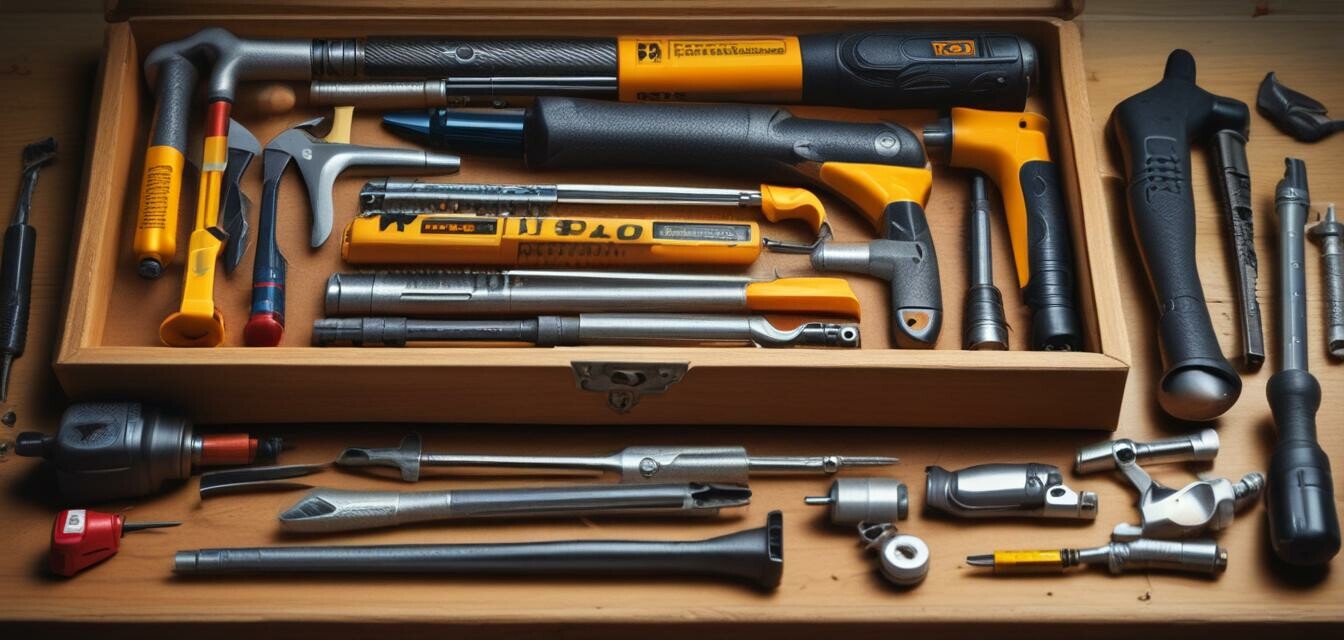
DIY Home Repairs: Tools You Need
Key Takeaways
- Every homeowner should have a basic set of tools handy for routine repairs.
- Investing in quality portable power tools can save time and ensure efficiency.
- Familiarity with your tools leads to better workmanship and safety.
As a homeowner, tackling home repairs can feel daunting without the right set of tools. Whether you're fixing a leaky sink or assembling furniture, having the essential tools at your disposal can make a world of difference. In this guide, we'll cover the must-have tools for DIY home repairs to help you handle common tasks effectively.
Essential Hand Tools
Before diving into power tools, it's essential to have a collection of hand tools that every homeowner should have. Below is a list of fundamental hand tools:
| Tool | Purpose |
|---|---|
| Hammer | Nailing, knocking things in or out, and removing nails. |
| Screwdriver Set | Tightening and loosening screws of various sizes and types. |
| Pliers | Gripping, turning, and cutting wires or small objects. |
| Measuring Tape | Measuring lengths, widths, and heights accurately. |
| Utility Knife | Cuts boxes, rope, and other materials. |
| Adjustable Wrench | Loosening or tightening nuts and bolts. |
Power Tools for Home Repairs
While hand tools are essential, having the right power tools can dramatically improve your efficiency when tackling home repairs. Here are some essential power tools you should consider:
| Tool | Purpose |
|---|---|
| Cordless Drill | Drilling holes and driving screws with ease. |
| Impact Driver | Provides extra force for driving screws into tough materials. |
| Angle Grinder | Cutting, grinding, and polishing metal and masonry. |
| Portable Saw | Cutting wood and other materials quickly and accurately. |
| Multi-Tool | Versatile tool for cutting, sanding, and scraping different materials. |
| Orbital Sander | Used for smoothing surfaces before painting or finishing. |
Why Invest in Quality Tools?
Investing in quality tools can save you money in the long run by reducing the need for replacements and minimizing the frustration that often comes with cheap tools. When you purchase high-quality tools, you're not just buying practicality; you're promoting safety and efficiency. As you develop your skills with these tools, you'll find that your capabilities as a DIY homeowner expand significantly.
Safety Tips for Using Tools
Regardless of whether you are a beginner or experienced DIY enthusiast, safety should always be a priority. Here are some safety tips to keep in mind:
- Always wear safety glasses or goggles when working with power tools.
- Keep your workspace clean and organized to avoid accidents.
- Use the right tool for the job to prevent injury and damage to the tool.
- Disconnect power tools when not in use and follow manufacturer instructions carefully.
Beginners Section
If you're new to DIY home repairs, here are some additional tips to help you get started:
- Start with small tasks to build your confidence.
- Read the instructions and manuals of your tools carefully.
- Watch online tutorials to gain practical knowledge.
- Practice using each tool before tackling larger projects.
Conclusion
Taking the plunge into DIY home repairs can be incredibly rewarding and save you money over time. By investing in a basic set of hand tools and essential power tools, you're equipping yourself to handle everyday tasks effectively. Get started with simple projects, and as your skills develop, you may find yourself taking on bigger challenges. Remember to prioritize safety, familiarize yourself with each tool, and enjoy the journey of improving your home.
Pros
- Increased confidence in tackling home repairs.
- Cost savings by performing repairs on your own.
- Ability to learn and improve your skills over time.
Cons
- Initial investment in tools can be costly.
- Learning curve for new tool users.
- Potential for accidents if safety precautions are not followed.
For more tips and resources on portable power tools, check out our Buying Guides and How-To Guides.
